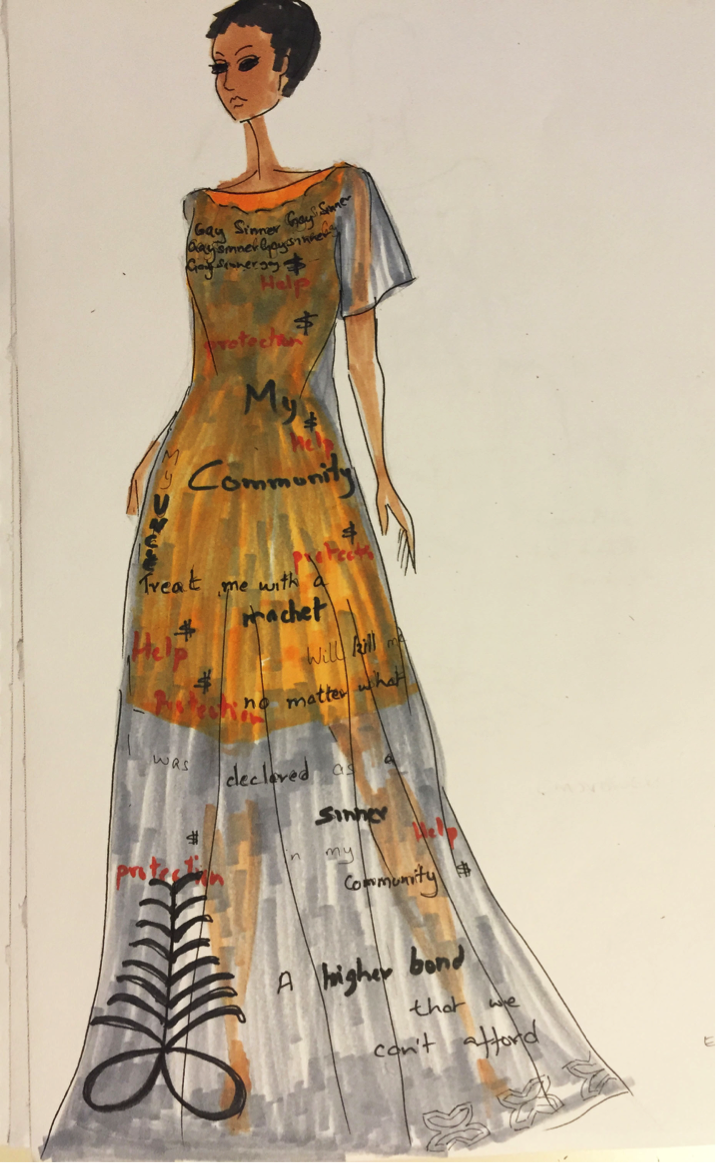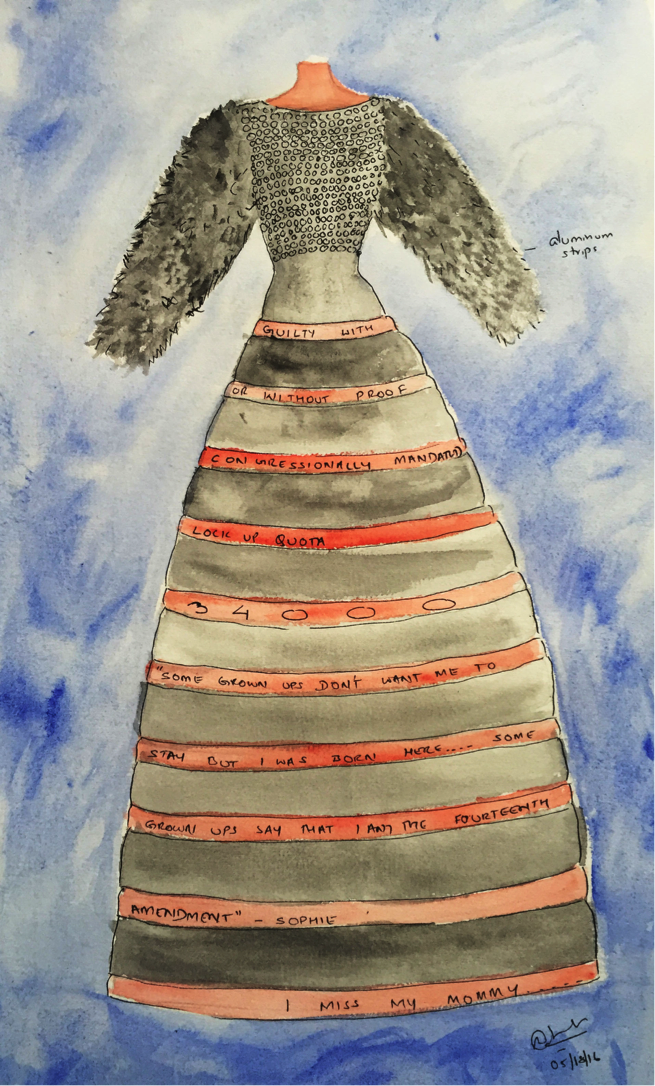by Namita Paul

As an artist and a designer, it occurred to me that perhaps I could contribute to CIVIC’s work by bringing some of these stories to the public through my art. For this project, I am especially interested in the nature of immigration detention and its effects on individuals seeking asylum, as well as the historical and geographical knowledges the detainees bring. The above sketch depicts the story of a Ghanaian refugee who was escaping homophobia, simply by association. His life in jeopardy, Sisi (name changed) left Ghana as he was afraid for his life. After a long, arduous journey through Ecuador, Columbia, Costa Rica, Nicaragua, Honduras, Panama, and Mexico, Sisi finally checked in with the US Border forces but instead of getting the freedom he dreamed about, he was taken away to a detention facility.
The illustrations attempt to convey stories such as Sisi’s and present them through clothes — the first markers of loss of identity when detainees are required to change into uniform in certain facilities. Each dress incorporates the real words of migrants and attempts to narrate biographical story in its design, together serving as a testimony and as a marker of the individual’s humanity. My hope is that these creations would also leave a physical marker of an experience that might otherwise get lost in the current discourse around immigration, borders, and the nation state.


